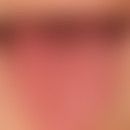HistoryThis section has been translated automatically.
Synonyms
Secretion drainage; bronchial hygiene; secretion mobilization;
First author
In 1897, Gustav Kilian performed the world's first bronchoscopy with a rigid bronchoscope at a Freiburg ENT clinic to remove a foreign body (Stasche 1999).
The first flexible fibroscopes were on the market in France from 1974 (Dumon 1983). They are still used today for diagnostic and especially for therapeutic purposes such as bronchial toilet (Seehausen 2007).
DefinitionThis section has been translated automatically.
The bronchial toilet is used to improve secretion clearance (Kasper 2015).
General informationThis section has been translated automatically.
Outpatients learn secretion drainage by specially trained physiotherapists.
Bronchial toilet should be performed at home 1 x / d (Kroegel 2014), even if there are no complaints. It takes approximately 1 h (Kühne 2021).
Indications
Bronchial toilet is used for:
- Chronic putrid lung diseases such as.
- bronchiectasis (Kasper 2015)
- ventilated patients (Striebel 2015)
- Patients with tracheal cannulae (Prosiegel 2018).
Implementation
Bronchial toilet includes various procedures with the goal of a productive cough (McCallion 2017):
- gravity assist methods:
- Quincke's hanging position: knee-elbow position (Herold 2022).
- Bottle- Down- Position. In this position, the head is positioned lower than the thorax.
- thoracic percussion and vibration techniques:
- Tap drainage: manual tapping of the thoracic wall.
- RC- Cornet: By means of a special valve tube, pressure and flow fluctuations are triggered in the bronchi.The positive exhalation pressure causes a rhythmic expansion of the bronchial lumen.
- VRP1 Flutter: Through a funnel closed by a ball, pressure and flow fluctuations can be used to prevent airway collapse.
- Techniques to facilitate expectoration:
- FET = forced expiration technique: In this technique, forced expiration with low lung volumes is performed with the glottis open (so-called huff). This maneuver is repeated several times after a pause of 2-3 seconds. This results in variable airflow with mucus mobilization.
- Improving mucociliary clearance:
- Lip brake: Exhalation is performed through pursed lips. The resulting pressure in the mouth spreads into the peripheral bronchi and prevents collapse of the bronchi and bronchioles.
- Autogenous drainage: In this procedure, mucus is mobilized by a variable air flow. The patient actively inhales deeply and slowly through the nose, then pauses for 3-5 seconds, exhales passively with the throat open, and finally exhales actively for as long as possible.
- PEP mask = positive expiratory pressure: Here, breathing is done through a face mask with an inhalation valve and adjustable expiratory resistance to avoid respiratory collapse (Kroegel 2014).
- Inhalation therapy with 3 - 7% saline (Herold 2022) or with mucolytic agents such as the mucolytic (Kühne 2021) Fluimucil (Larsen 2013).
- Fluid intake sufficient to liquefy the bronchial secretions (Herold 2022).
- Drug secretolysis:
These include mucolytics such as acetylcysteine (Fluimucil), which alter the quality of bronchial mucus, secretolytics such as ambroxol, which decrease the viscosity of mucus (Larsen 2013), and detergents, which can reduce the adhesion of bronchial mucus to the epithelium. However, their clinical efficacy is controversial (Schulte am Esch 2011).
In intubated patients or patients with tracheal cannula:
- Aspiration of respiratory secretions and / or foreign material such as food.
This should be done as often as necessary, but not more often than necessary (Keller 2021).
The timing of suctioning is best determined by auscultation when coarse bubbly RGs occur (Striebel 2008).
Suction can be performed from oral, nasal, or endotracheal routes (Keller 2021) and can be performed with an open or closed system (Striebel 2015).
The upper airways such as oral cavity, nasal cavity, pharynx can be aspirated and also the lower airways to which larynx, trachea, bronchial system belong (Keller 2021).
The suction itself is usually performed through a flexible fibroscope (Dumon 1983) with the patient in different positions (Lang 2020).
Endobronchial suctioning should always be performed under sterile conditions and should not last longer than 10-15 seconds (Striebel 2008).
LiteratureThis section has been translated automatically.
- Dumon J F (1983) Tracheo- and bronchial toilet - bronchial fibroaspiration. In: Rügheimer E. (eds) Intubation, tracheostomy and bronchopulmonary infection. Springer Verlag, Berlin, Heidelberg. 395 - 400
- Herold G et al (2022) Internal medicine. Herold Publ. 346
- Kasper D L et al (2015) Harrison's Principles of Internal Medicine. Mc Graw Hill Education 1696
- Keller C (2021) Specialty nursing: out-of-hospital critical care. Elsevier Urban and Fischer Publishers 316 - 317.
- Kroegel C et al (2014) Clinical pulmonology: the reference work for clinic and practice. Georg Thieme Verlag Stuttgart / New York 300
- Kühne F (2021) Klartext bronchiectasis, pulmonary fibrosis and sarcoidosis. Epubli- Verlag chapter 2
- Lang H (2020) Ventilation for beginners: theory and practice for health and nursing care. Springer Verlag Germany 180
- Larsen R et al (2013) Ventilation: principles and practice. Springer Verlag Berlin / Heidelberg 422
- McCallion P et al (2017) Cough and bronchiectasis. Pulm Pharmacol Ther. (47) 77 - 83
- Prosiegel M et al. (2018) Dysphagia: diagnosis and therapy. A guide for competent action. Springer Verlag Berlin 166
- Seehausen V et al (2007) From phthisiology to pneumology and thoracic surgery: 60 years of Heckeshorn Pulmonary Clinic. Georg Thieme Verlag Stuttgart 44
- Schulte am Esch J et al (2011) Anesthesia: intensive care, emergency medicine, pain therapy. Georg Thieme Verlag Stuttgart 450 - 451
- Stasche N (1999) Gustav-Killian symposium - 100th anniversary of bronchoscopy: flexible and rigid endoscopy of the airways and upper esophagus. Dtsch Arztebl 1999; 96 (4): A - 204 / B - 163 / C - 159.
- Striebel H W (2015) Operative intensive care: safety in clinical practice. Schattauer Verlag Stuttgart 381
- Striebel H W (2008) Anesthesia - intensive care medicine - emergency medicine: for study and training. Schattauer Verlag Stuttgart / New York 338 -339



